Not all bacteria of a certain genus and species demonstrated to cause foodborne illness may be pathogenic
The aquaculture industry has an excellent record regarding the production of safe, high-quality products. However, the microbial composition of aquacultured products is important to many individuals and agencies. Of particular importance are those microorganisms considered human pathogens.
Producers and processors need information to establish adequate hazard analysis critical control point (HAACP) plans to comply with government regulations and buyer specifications. Aquaculture producers seek to identify how effluents from their operations can impact compliance with environmental regulations. Microflora in aquaculture facilities can also impact worker safety, especially in indoor recirculating aquaculture systems.
It was suggested in the 1960s that the bacterial flora of fish was a reflection of its environment. Research also demonstrated that gill flora was similar to that of the skin, which reflected the environment. Since then, numerous studies have supported the relationship between the water growing environment and the aquatic organisms raised in that environment.
Waste use, health problems
Aquafarming in ponds enriched with human and animal excreta has been a longstanding tradition in some countries. Recent studies in Africa have demonstrated the potential usefulness of these wastes for the optimal utilization of limited water resources and associated food production.
However, the use of excreta presents distinct health problems involving passive transmission of animal pathogens to the aquacultured animals residing in the polluted water, transmission of certain flatworms that have life cycles which include the cultured animals as intermediate hosts, and transmission of other flatworms with life cycles involving snail hosts and other pond fauna.
While fish can carry pathogens passively in their intestines, gills, and body surfaces, and subsequently infect people who handle, prepare, or eat the fish raw or partially cooked, there is minimum risk to those who consume fully cooked fish.
Microbial surveys
Many microbial surveys have been conducted on the presence and significance of human pathogens in flow-through, pond and recirculating aquaculture systems. Information on the bacterial composition of product reared in net pens is scarce due to net pen culture’s recent emergence as a major form of aquaculture and the relative difficulty of sampling in the pens.
Pathogens in fish
Table 1 contains a list of pathogenic microorganisms found in fish and culture water for several species of warm- and coldwater fish grown in ponds. The microbial flora most frequently identified were Salmonella sp. and Clostridium botulinum.
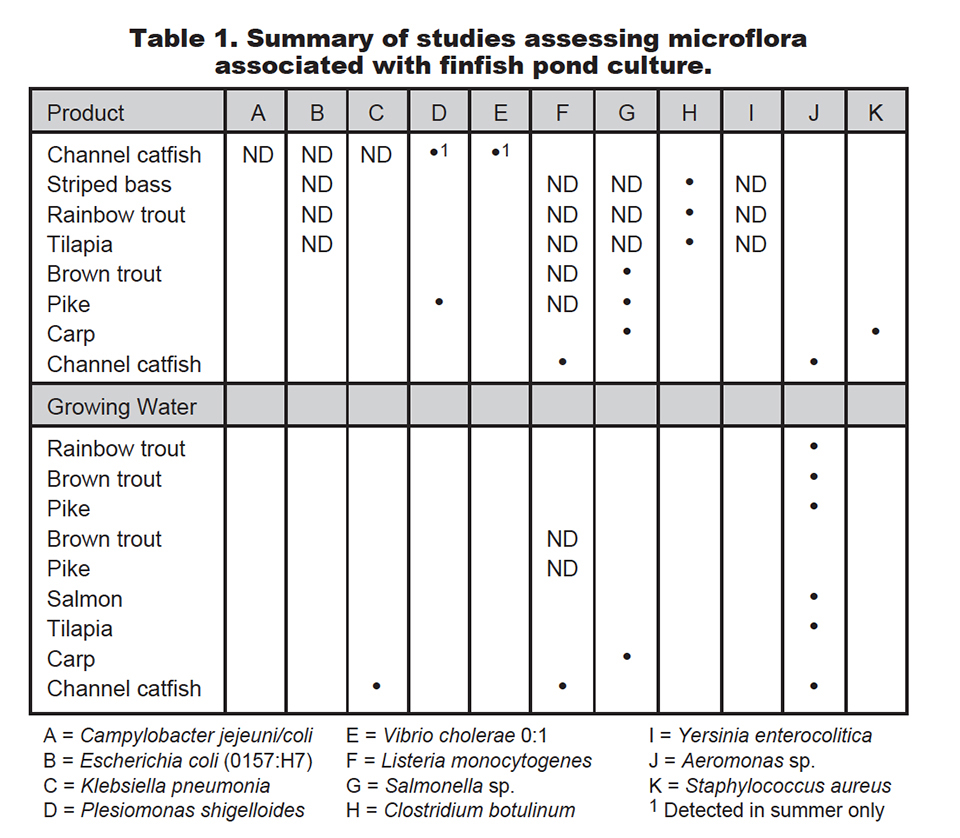
The presence of salmonella is understandable, since birds, snakes, turtles, and other wildlife all harbor the microorganism. In addition, nutrients in the water, feed, and feces provide an excellent food source for maintenance and proliferation. Although not listed in the table, salmonella was present in eel aquaculture systems in both outdoor and indoor ponds.
C. botulinum is a ubiquitous organism found in soil. Ponds with earthen structures or significant sediment provide an ideal reservoir for many clostridia species. It is also not surprising that Aeromonas sp. were consistently identified in growing water.
Aquatic aeromonas organisms are common and can cause disease in fish and other aquatic animals. A. hydrophila and Plesiomonas shigelloides are vibriolike organisms recently recognized as causes of foodborne gastroenteritis. Their recognized role in outbreaks of human gastroenteritis is steadily increasing and even changing diagnoses in some cases of infection otherwise attributed to E. coli.
A. hydrophila has been identified as an opportunistic pathogen in immunocompromised hosts and recently demonstrated to cause enteritis in normal hosts, as well. P. shigelloides is a potential agent of diarrhea in humans, but has not received the attention given to the vibrios and enterics.
Few microbial studies have been performed with fish grown in recirculating aquaculture systems. The major pathogens identified included aeromonas, Staphylococcus aureus, Listeria monocytogenes, Vibrio cholerae, V. parahaemolyticus, and V. vulnificus. Most of these are waterborne organisms, so their presence in recirculating systems is not unexpected.
The high stocking densities used in recirculation systems commonly subject fish to increased physiological stress. This crowding and stress could enhance the spread of bacterial pathogens among the fish, resulting in higher overall bacterial loads than those in fish from less-intensive aquaculture systems or in wild stocks. Also, since recirculating systems conserve water, elimination of the bacteria can be difficult or impossible once colonization occurs.
Research in the author’s laboratory has shown that human and fish pathogens form biofilms on biofilters, inside pipes, and in growing tanks. The dynamics between the biofilm, animals in culture, and growing water have not been fully demonstrated. It is noteworthy that other pathogens are absent, since many recirculating systems are located indoors and thus are protected from sources of contamination such as soil, animals and the environment.
Pathogenic in shrimp
The majority of studies on human pathogens in shrimp have been performed on the product rather than the growing water. Various pathogens have been identified (Table 2), with the presence of Vibrio cholera, V. parahaemolyticus, and V. vulnificus expected, since shrimp are grown in marine environments.
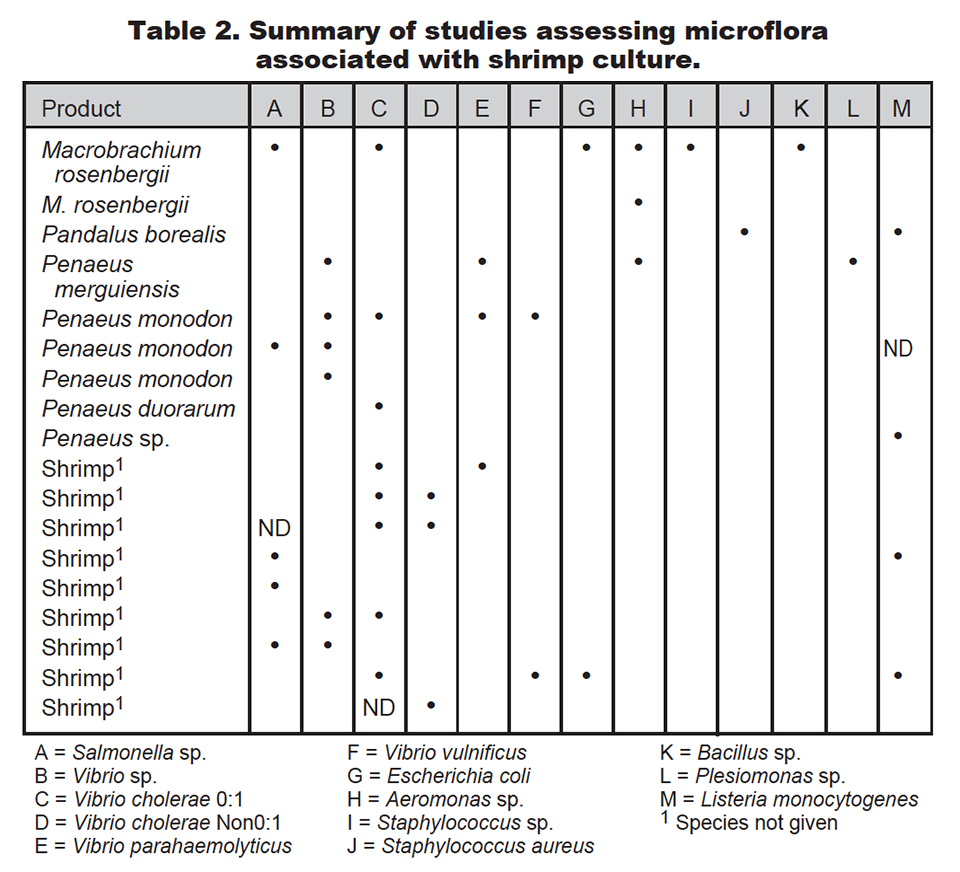
The similarity of compositions between wild and cultured shrimp, despite their being obtained from different habitats, suggests an influence of the host on the establishment of the gut flora. A mechanism for the high occurrence of vibrio microorganisms was demonstrated in 2002. The microorganisms attach to and colonize the exoskeletons of crustaceans, which provide a means for survival and growth in the aquatic environment. It has been suggested the concentrations of vibrios that can exist on a single shrimp carapace may be of some concern with regard to public health.
It is not surprising that two emerging pathogens, Yersinia enterocolitica and E. coli 0157:H7, have seldom been identified in growing waters or products. While surveys for Y. enterocolitica showed the organism is widely distributed in beef, lamb, pork, oysters, shrimp, crabs, and water, the incidence is rare overall. Additionally, most of the isolates identified in these cases were avirulent, and virulent strains seldom occur in these foods.
A principal source or reservoir of virulent Y. enterocolitica is pigs. Not many foodborne outbreaks have been linked to E. coli 0157:H7, but salmon have been identified as a transmission vehicle in rare cases. It appears cattle are a reservoir of the organism, and meat can become contaminated by E. coli during processing.
Conclusion
While many pathogenic microorganisms have been identified in aquaculture water and the species cultivated therein, the overall safety of aquacultured products remains exceptional. Further research, however, would be helpful.
Almost all microbial studies on pathogens associated with aquaculture have only considered their presence, absence, or relevance to each other. Only limited research has been performed on the actual concentrations of the pathogens identified. Additionally, many of the studies focused only on genera rather than genera and species.
This is especially important when only some organisms in a genus are pathogenic. Even more specifically, not all the bacteria of a certain genus and species demonstrated to cause foodborne illness may be pathogenic. Finally, for pathogens to cause foodborne illness, temperature abuse and/or cross-contamination during processing and storage also must occur.
(Editor’s Note: This article was originally published in the August 2004 print edition of the Global Aquaculture Advocate.)
Now that you've reached the end of the article ...
… please consider supporting GSA’s mission to advance responsible seafood practices through education, advocacy and third-party assurances. The Advocate aims to document the evolution of responsible seafood practices and share the expansive knowledge of our vast network of contributors.
By becoming a Global Seafood Alliance member, you’re ensuring that all of the pre-competitive work we do through member benefits, resources and events can continue. Individual membership costs just $50 a year.
Not a GSA member? Join us.
Author
-

George J. Flick, Jr., Ph.D.
Food Science and Technology Department
Virginia Tech/Virginia Sea Grant (0418)
Blacksburg, Virginia 24061 USA[117,100,101,46,116,118,64,103,107,99,105,108,102]
Tagged With
Related Posts
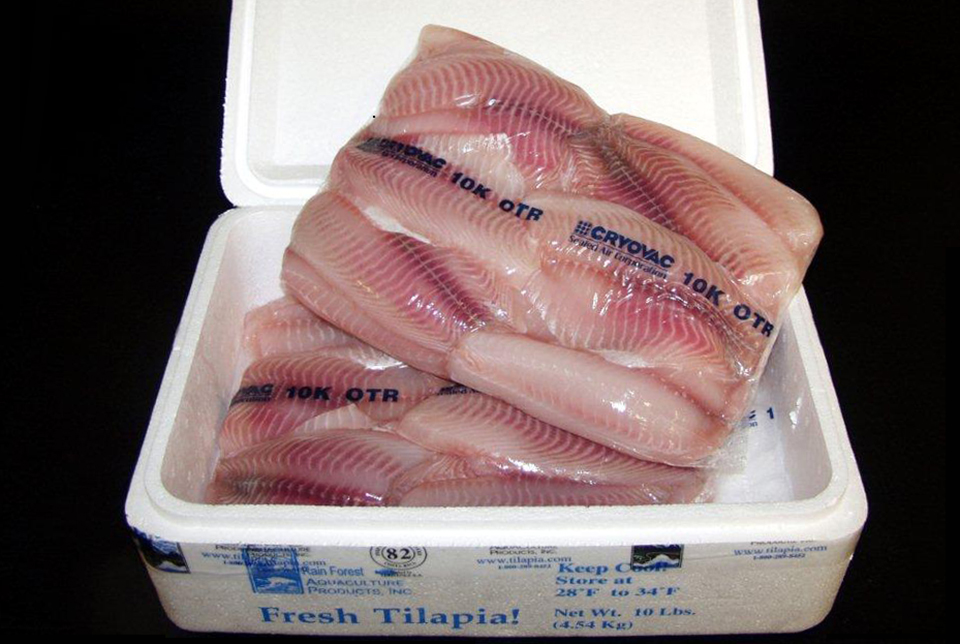
Intelligence
An examination of seafood packaging
Some substances can migrate from plastics and other seafood packaging materials into the product. Even if the substances are not harmful, they can affect the flavor and acceptability of the food.
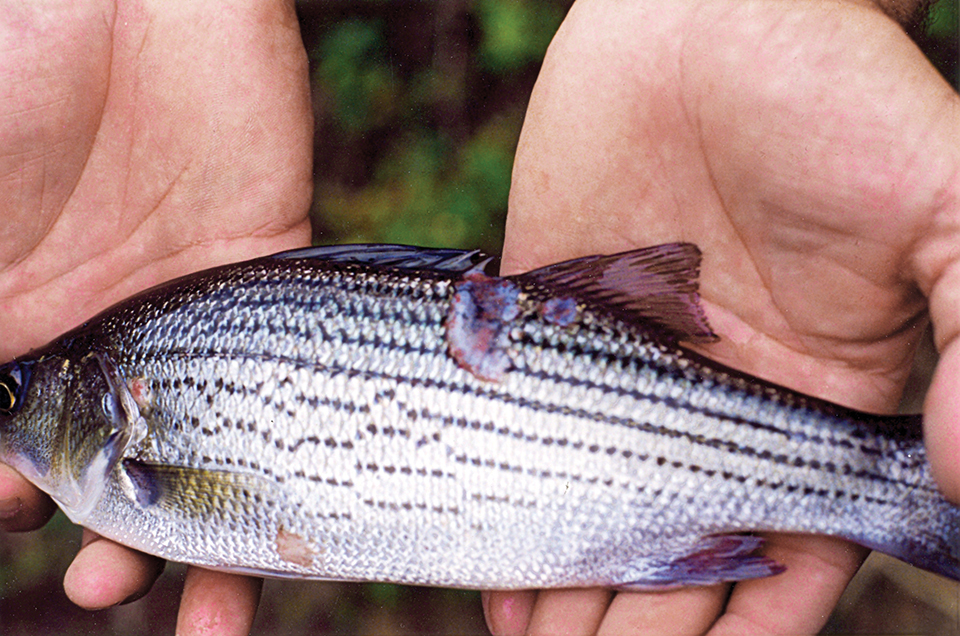
Health & Welfare
Antibiotic-resistant bacteria, part 1
No antimicrobial agent has been developed specifically for aquaculture applications. However, some antibiotic products used to treat humans or land-based animals have been approved for use at aquaculture facilities.

Health & Welfare
Bacterial, chemical residues impact tilapia quality
Both bacterial pathogens and chemical residues can affect the quality of farmed tilapia products. In production systems, Vibrio bacteria quickly proliferate following disease outbreaks.
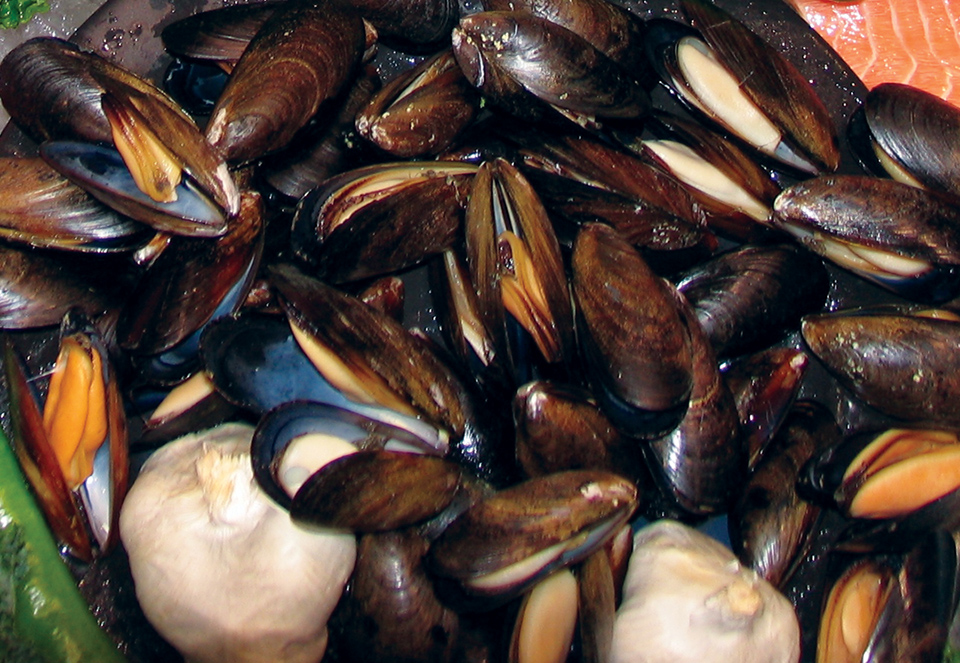
Health & Welfare
Pathogenic Vibrios in shellfish
It is important to understand the distribution of pathogenic bacteria in the marine environment to predict potential health concerns transmitted by seafood.

